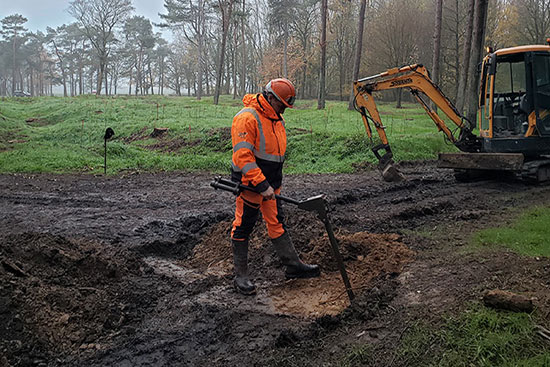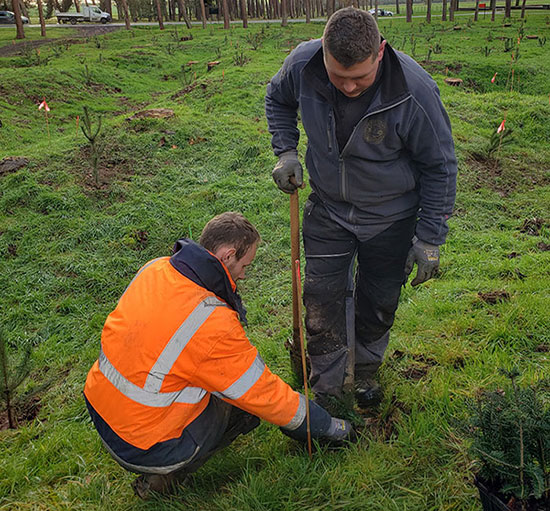If we don’t replant, what will we be left with?
April 12, 2023 - Defence Stories
Update on the forest conservation at Canada's First World War memorials International Operations
In 2021, Veterans Affairs Canada announced a 10-year forest conservation initiative at the Canadian National Vimy Memorial and the Beaumont-Hamel Newfoundland Memorial in France.
As part of the project, we will plant around 3,000 – 4,000 trees per year at Canada's First World War memorials to ensure the sustainability of the commemorative sites for future generations.
As part of the first planting cycle that kicked off the 10-year initiative, we already planted 641 new trees at Vimy.
In the fall of 2022, we began the second cycle of tree planting at the commemorative sites.
The first step: de-mining

Caption
Deminetec inspects the forest at Vimy as part of the de-mining process.
It took two weeks to complete the de-mining process—a crucial step that includes detection of ammunition and potential explosives from the First World War.
More often than not, Florian Debacker—the lead de-miner for Deminetec—and his team find First World War remnants throughout the former battlefields. "Due to its weight and mode of firing, the ammunition is generally found at characteristic depths. On this site, a safety depth of 50cm was required, which explains the discoveries of German defensive grenades and 3-inch stoke mortar shells. If greater depth had been requested, we would have begun to discover artillery shells with greater and greater caliber."
Next up: planting

Caption
Pascal Fourmy's team hard at work.
After the de-mining process comes the planting of the trees. Pascal Fourmy is the head gardener for the Commonwealth War Graves Commission at Vimy and is responsible for the planting of over 2,000 trees during this phase of the project.
This is especially important to Fourmy – not only for the commemorative aspect, but to conserve and revitalize the forest at Vimy.
"For me, it's very important because I've been based here as a gardener at Vimy for a few years and I realize that the forest is dying more and more. If we don't replant, what will we be left with. The forest is a very important part of Canada's National Vimy Memorial site. If we continue to plant every year, it will regenerate the forest and we will continue to enjoy it for a long time come. I am happy to be able to participate in this project," he says.
Next steps
The work will continue over the coming years – the team will prepare the ground for the next cycle of planting, and will plant approximately 3,500 trees in late 2023. A final number of trees after the 10-year initiative is unknown, as planting cycles are determined by a forest management plan – but it's evident that the forests at Vimy and Beaumont-Hamel will be revitalized for years to come.
For decades, millions of Canadians and people around the world have visited these sites of remembrance. Like the monuments themselves, the forests that surround them are a powerful symbol—a living reminder of those we've lost.